|
- Yokomo YRF Formula 001W -
1/10-SCALE 2WD ELECTRIC | KIT
Yokomo brings their on-road experience to modern F1
WORDS & PHOTOS BY LITO REYES
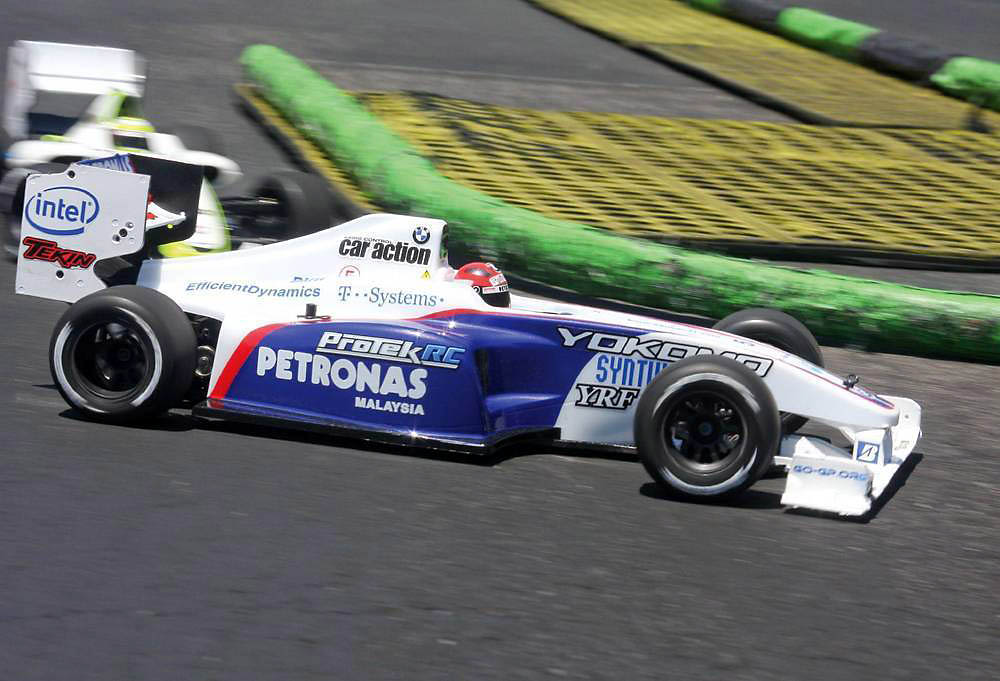
F1’s popularity stateside is higher than it has been in decades, so it’s not surprising that there is a resurgence in RC F1’s popularity. What is surprising is that Japan’s Team Yokomo, with its long history of championship-winning on-road cars, took so long to produce an F1 car kit. On the other hand, they didn’t build their reputation by doing anything hastily just to put something out; they tend to take their time and do it right before their name goes on it. The resulting Yokomo YRF Formula 001W was designed by multi- IFMAR World Champion Naoto Kitagawa, whose success with on-road cars in the past five years is nearly unmatched. Many design cues from Yokomo’s successful 1/12-scale platform have made their way to the larger F1 car. Designed to be built as either the older-style foam-tire wide platform or the more modern rubber-tire narrow setup, the YRF Formula 001W (from here on referred to as the “YRF”), looks to be a robust platform, capable of handling any racing situation. And with support from new distributer, A Main Hobbies, Yokomo kits are more accessible than ever.
FLEX PLATE FRONT SUSPENSION
Instead of a traditional sliding kingpin front suspension, Yokomo designed the front end around a flexible carbon lower A-arm plate. The upper A-arm is free to pivot on a hinge, as it does in traditional designs, but the steering pin, instead of being a sprung piece that slides up and down, is fixed in place. Spacers installed above and below the steering block allow for front ride height adjustments. Camber can be adjusted with steel turnbuckles, and caster can be changed by installing clip-in shims in various configurations on the upper A-arm mount. Though the flex plate is made from thick 3mm carbon stock, it is milled down to 1.4mm in the middle for controlled bending, with set screws used to limit up and down travel. It is a fairly stiff design without a large range in motion, so it appears to be best used in high traction situations, like carpet or very well-prepared asphalt. |
|
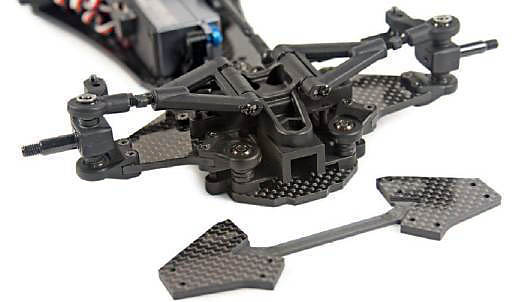
The YRF’s lower A-arm flex plate is designed to bend in the middle to allow the suspension to move. It is milled down from 3mm to 1.4mm for controlled flex.
|
1/12-STYLE DIRECT DRIVE
The YRF’s relationship to Yokomo’s R12 pan car shows in the rear end design. Not only do the kits share the composite links used to locate the rear pod, they also share the same pivot hardware and rear axle. This axle is an industry-standard ¼” size and is made from strong and light carbon graphite. The rear hubs on many F1 cars are usually a weak spot; most are made of aluminum, which can easily bend or snap with impact against a wall during a race. Both the pinned hub on the spur gear side and the clamping hub on the opposite are made from steel, and are very strong. The aluminum rear bulkhead pieces are designed to let the lower pod plate twist to create traction. The brace that connects them in the rear keeps the upright aluminum parts from spreading, but is not fastened tight, as the brace rides on O-rings. The whole pod pivots on a 5mm ball, and is located by a pair of composite links. A single shock acts as a damper to control how fast the pod is allowed to twist, and small springs on the outboard edges of the pod help to center it.
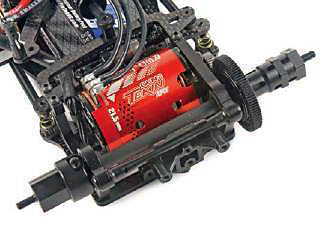
A lightweight carbon graphite axle and heavy-duty hubs come standard with the YRF. A 64-pitch spur is included, though a pinion isn’t. The rear pod shares parts with Yokomo’s World Championship-winning R12 pan car.
|
|
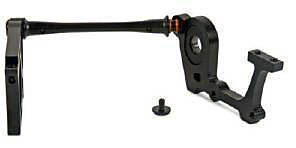
The back of the aluminum uprights of the rear pod are not firmly secured together; the rod between them “floats” on O-rings, letting the pod twist to generate traction.
|
FOAM- AND RUBBER-TIRE COMPATIBLE
Throughout the U.S., RC F1 racing programs have primarily adopted the use of rubber tires, which means a narrow 190mm car width. However, many places in the world still race with the older foam tire standard, which allows for a 200mm-wide car. The YRF kit comes with the parts to build it in either 200mm or 190mm wide configurations. Really, the difference is only in the front end, as the type of wheel you use, be it an F103-style wheel for the 200mm foam setup or an F104-style wheel for a 190mm rubber tire setup, determines the rear width. There are two lower A-arm flex plates — a wide one, and a narrow one — included for use. The printed instructions come with an insert showing what settings to use for the narrow setup. Included in the kit are a set of black 10-spoke wheels designed for foams.
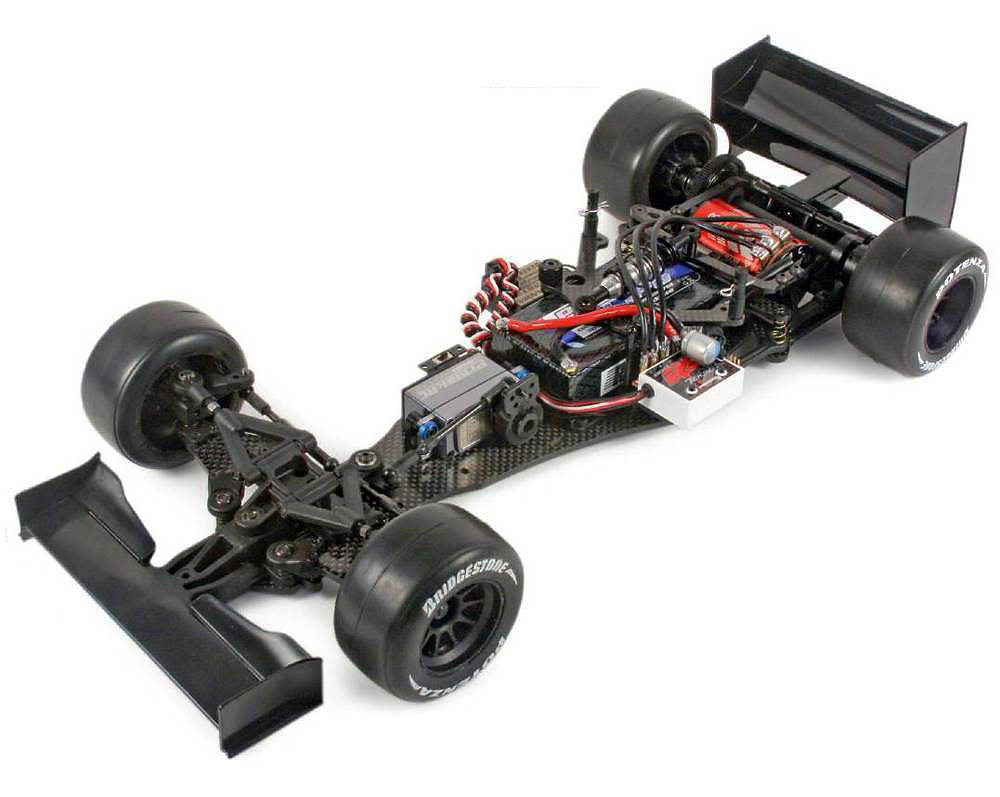
The YRF accepts standard-size LiPos and “shorty” packs. A shorty allows three positions to adjust weight distribution.
MULTI-CONFIGURATION GRAPHITE CHASSIS
The YRF supports the use of either standard-size LiPo packs or the newer shorty packs. If shorty packs are used, plastic battery retainers can be mounted in three positions (fore, center, or aft) to adjust weight bias. Two composite platforms straddle the battery to mount the speed control and receiver. An upper carbon plate is used to keep the battery from popping out and acts as a mounting point for the rear pod’s monoshock. It’s retained by a pair of thumbscrews to allow for easy battery changes. Out of the box, the steering setup requires cutting the ears off the servo and mounting it upright with the tie rods connected directly to the servo saver. I chose to use the optional bell crank steering setup (part YRFSTBC), which doesn’t require cutting the ears off the servo. If the stock steering setup is used, it’s possible to mount all of the running gear down the centerline of the chassis, which could be beneficial for some setups.
The YRF front and rear wings are made out of durable black nylon. The wings are mid-2000’s style—low and wide in the rear and narrow in the front. Tamiya and Tamiyacompatible front and rear wings can be fitted with little to no modification to the wings. It also comes with a rear diffuser, which not only looks great, but is also functional. By directing airflow up as it passes under the chassis, a low pressure area is created under the car, which helps create downforce at high speed. |
|
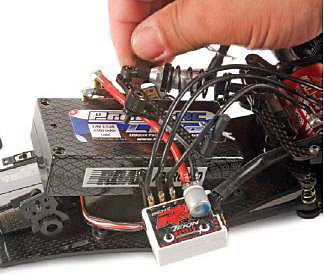
The chassis shock mount and battery retainer is held in place by two thumbscrews. The receiver and speed control are mounted on raised composite platforms on either side of the battery.
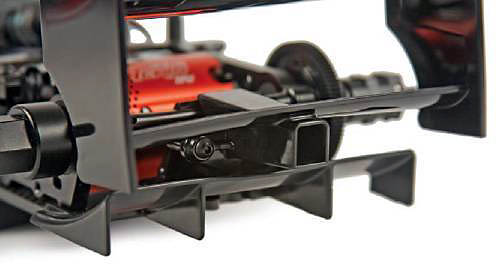
The nylon diffuser works to keep the rear end planted at high speeds. And any Tamiya-compatible wing can be used on the YRF.
|
BEHIND THE WHEEL
The F1 series that I participate in only allows rubber tires, so I built up the YRF in the narrow 190mm configuration. The series also encourages scale realism, so with the help of Bill Zegers of Zegers RC Graffixx, I prepped the Yokomo High Nose body to mimic Robert Kubica’s 2009 BMW Sauber F1.09. Because the stock front and rear wings were designed for a different era of F1, I replaced them with Tamiya and 3Racing pieces. My initial testing was at the Freedom Park racetrack in Camarillo, CA. Because I was there on a non-race weekend, the track was dry and not at all prepped. With the YRF geared similarly to one of my other F1 cars I had raced there before, the Tekin powertrain propelled the lightweight chassis noticeably faster than I was used to, even with a shortage of grip. Driven conservatively, due to conditions, the YRF was planted and predictable, with a touch of off-power understeer going into turns. It was easy to induce oversteer by yanking the throttle, but after all, this is a direct-drive F1 car, not a point-and-squirt AWD touring car. My next test was at a much larger, prepared track in Gardena, CA. This track allowed me to really get a feel for this Yokomo platform. The stiff flex plate front end felt much more at home with the mechanical grip generated by the VHTcovered track. In this situation, I found the YRF to be nimble and responsive, and even able to keep pace with the more powerful 17.5T touring cars. On this larger track, I was able to gear up taller than I would at my smaller tracks; this let me test the diffuser to see if it actually made a difference. After removing the two screws that affixed the diffuser to the rear pod, I headed back out on the track. The infield felt the same as before, but once I hit terminal velocity on the back straight, a couple twitches of the steering wheel told me that the car wasn’t quite as planted as it was with the diffuser on. Heading into a high-speed sweeper off the back straight, I could feel the rear end wanting to swing around, so I had to back off the throttle a bit to keep it under control. Having to scrub off speed to keep my driving line around the turn time after time pretty well confirmed for me that the diffuser was functional and helping to keep the YRF’s rear end planted. During a lap when I was pushing the car hard, I tapped a board on the inside of a high-speed turn, which sent the YRF sliding on its lid only to come to a stop by smacking hard against another board. After it landed right-side up, I gingerly drove it back to the driving line, where I was surprised to find that the setup had not tweaked one bit. There was some cosmetic damage to my beautiful BMW Sauber livery, but putting it on the bench showed there was no damage to the chassis, and it drove exactly as it did before the shunt. Later, I went back to the Camarillo track, prepared with softer monoshock and side springs. Additionally, I installed the optional sliding kingpin suspension on the front end, making it more like a traditional F1 car. The softer front and rear let the YRF generate more traction on the dusty surface than the stock setup, giving me the room to drive the car harder than my previous session. It still wasn’t quite as planted as on the prepped tracked, but it was world’s better; I would consider a setup just a little bit firmer for a race weekend at that track.
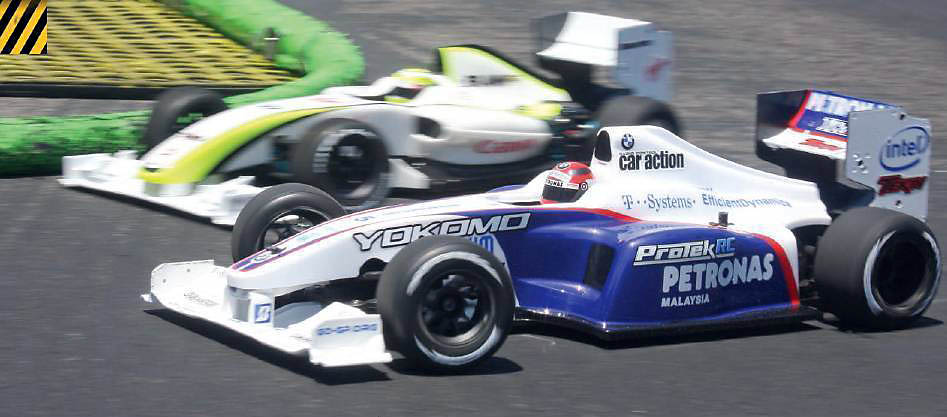
FINAL WORD
I had high expectations from the YRF Formula 001W from the start. With its lineage and pedigree, I expected it to perform at the top level. What I didn’t expect was how durable the car is. I know firsthand the weak points of other cars in its class; the team at Yokomo must have analyzed them also, as they have eliminated these flaws with their design. Pan cars are traditionally very sensitive to tweaking. Not so the YRF, as it feels pretty forgiving, as far as F1 cars go. Still, it is a high-end kit and deserves attention to detail when assembling to appreciate the precision and attention to detail Yokomo put into it. And it’s not a parking lot basher—it also deserves a proper track to really see what it can do. If a new F1 car is on your shopping list, and you want a car that can perform and has parts support from one of the biggest retailers in the U.S., this Yokomo is definitely worth a serious look.
+
Premium Yokomo quality
Unique flex-plate suspension
Accepts Tamiya-type wings
-
Stock servo mounting position requires removal of servo mounting horns
TEST GEAR Tekin RS Gen2 Spec and HotWire 2.0
Tekin is one of the most recognizable names in RC electronics, and with their HotWire interface, they continue to be at the forefront of RC technology. The RS Gen2 Spec is an excellent speed control, trusted by racers all over the world. When you combine it with the HotWire interface, you can unleash features and settings most other manufacturers only dream of. The best feature is the data logging capability that lets its user review time-based graphs of throttle position, battery voltage, speed control temperature, motor RPM, and motor temperature for a run. This information can help fine tune a setup, a driving style, or even help determine installation problems. Especially impressive is the Android interface; you can actually review run data on your smartphone— how cool is that!
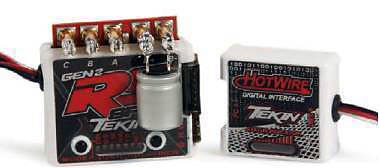
SOURCES
Yokomo and ProTek RC distributed by Amain.com
Airtronics airtronics.net
Exotek Racing exotekracing.com
Tekin teamtekin.com
Zegers RC Graffixx facebook.com/zegersrcgraffixx
|
|
VEHICLE SPECS
Item no.: YRF-001W
Scale: 1/10
Price: $290
Weight, as tested: 2.4 lb. (1072g)
CHASSIS
Material: 3mm Carbon graphite laminate
Type: Pan
SUSPENSION
Type (F/R): Flex plate / floating rear pod
SHOCK
Body: Threaded aluminum
Shaft: 2mm steel
Volume compensation: Foam
DRIVETRAIN
Type: RWD direct drive
Spur gear/pinion: 93T 64-pitch / pinion not included
Differential: Adjustable ball-type
Axle: .025” carbon graphite
Bearings: Metal-shielded
WHEELS &TIRES
Wheels: Black nylon foam-style 10-spoke with 14mm hex (rear)
Tires: not included
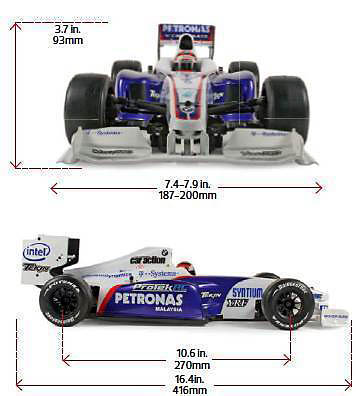
TEST GEAR (NOT INCLUDED)
Transmitter: Airtronics M12
Receiver: Airtronics RX-381
Steering servo: Protek RC 160SS
Speed control: Tekin RS Gen2 Spec
Motor: Tekin Redline Gen2 21.5 RPM
Battery: Protek RC 2S 4300mAH 100C Shorty
Body: Yokomo YF-01HN High Nose F 1 Body
Wheels: Exotek Racing 1298B F104 +3mm offset wheels
Tires: Shimizu Racing Belted Rubber F1 tires |
|
